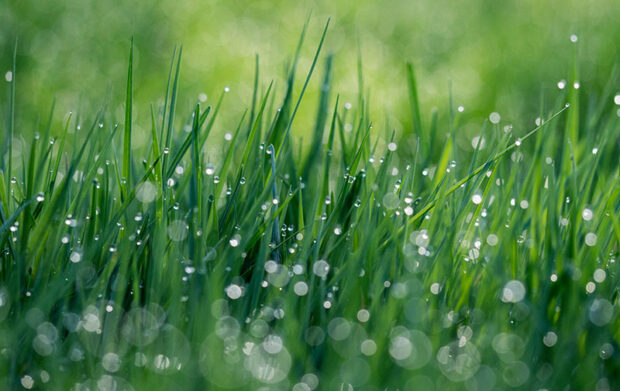Rain and melting snow impact water quality through small amounts of oil, grease, soil, debris, and other pollutants carried to rivers, lakes, and wetlands. Lawn fertilizer and pesticides are among the pollutants that have been found in storm water runoff. Lawn service providers throughout southeastern Michigan are being asked to minimize fertilizer and pesticide use, but this chemical use reduction depends on the consumer interest as well.
A “one size fits all” approach to lawn care can result in the application of unnecessary quantities of fertilizer and herbicides. A healthy lawn care program depends on customers that know their own goals and are interested in an environmentally-friendly alternative to standard practices.

Questions to ask yourself
- What are your lawn care goals? Are you concerned about potential pollution from storm water runoff? Are you concerned about exposure to lawn pesticides?
- Are you interested in a “rescue operation” for your lawn to remove excessive weeds and/or to rejuvenate lawn grasses and soils—before starting a healthy lawn program?
- Are a few weeds in your lawn acceptable? Are you willing to dig a few weeds by hand?
- Are you willing to follow recommended mowing and watering practices? Tall grass (2-1/2 to 3 inches after cutting) is healthier and shades out many weeds. Regular watering (daily, if possible) is the most essential factor supporting a green, healthy lawn.
- Are you willing to consider “extra” services such as core aeration or over-seeding? Seeding may be helpful for increasing turf density and crowding out weeds.
- Are you interested in low-maintenance groundcovers in shady areas as a substitute for grass?
Questions to ask lawn care services
- Do you offer an on-site consultation?
- Are you willing to provide a program tailored to my lawn?
- Do you obtain a soil test before recommending a fertilizer program?
- Do you offer organic and/or slow-release nitrogen fertilizer options?
- Do you offer a low-phosphorus or zero-phosphorus fertilizer option?
- Do you offer reduced pesticide or zero-pesticide options?
- Do you wait until May to begin fertilizer applications?
Lawn service programs
Alternative lawn care programs that address many of the above questions concerning fertilization and weed control are available from some firms. Here are examples of the programs offered:
Fertilizer options
Types of fertilizer – Slow-release fertilizers provide a steady supply of nutrients over an extended period of time, building healthy grass and reducing the potential for fertilizer runoff. Slow-release options include:
Organic fertilizers. Organic fertilizers are derived from remains or by-products of living organisms. Examples include bone meal, blood meal, cottonseed meal, fish emulsion, manures, and sewage sludge. Organic fertilizers enhance the biological activity of the soil system by contributing organic matter as well as a wide spectrum of macronutrients and micronutrients.
Synthetic fertilizers. Synthetic slow-release fertilizers may be applied in liquid or granular form. A formulation with 40 percent or more water insoluble nitrogen (W.I.N.) is recommended.
Quantity of nitrogen fertilizer – Depending on the type of grass you have, ask for an application rate of 2 to 4 pounds of nitrogen fertilizer per 1000 square feet be applied to the lawn over the growing season. Kentucky bluegrass typically requires 4 pounds, while fescues, ryegrasses, and grass mixtures require less. It is usually not necessary to begin fertilizing until May. Fall is the most important time to fertilize.
Low-phosphorus fertilizer – Ask for a low-phosphorus or zero phosphorus fertilizer to provide a high level of water quality protection.
Weed control options
Zero pesticide – No herbicide (or other pesticide) applied at any time.
Spot-treatment for weeds – The applicator identifies and treats for individual types of weeds. This approach minimizes herbicides and avoids the blanket application of a weed-and-feed combination.
One-time “rescue operation” for weed control – The applicator uses herbicides to remove significant quantities of weeds from the lawn. After the cleanup, a reduced herbicide program is followed.
Courtesy of SOCWA (Southeastern Oakland County Water Authority, www.socwa.org).
Elsewhere: Lawn Care without Pesticides

Leave a Reply